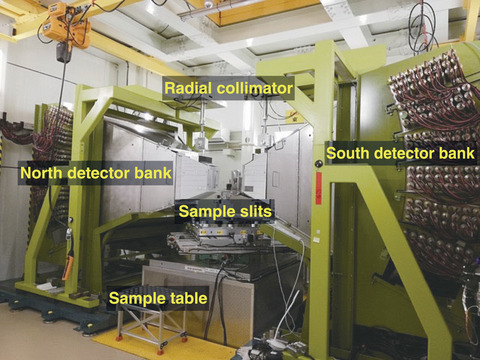
Fig.5-1 Engineering materials diffractometer “TAKUMI” (BL19) at J-PARC MLF
In accordance with the Science and Technology Basic Plan formulated by the Government of Japan, we have aimed to contribute to the advancement of science and technology and the promotion of industry in Japan through innovative research into neutron and synchrotron radiation. This has included using the high performance and multipurpose research reactor JRR-3, the high-intensity proton accelerator at the Japan Proton Accelerator Research Complex (J-PARC) and JAEA's synchrotron radiation beamlines at the Super Photon ring-8 GeV (SPring-8), upgrading neutron facilities and devices, and pursuing world-leading research in fields that use neutron and synchrotron radiation, such as nuclear energy and materials sciences.
(1) Research and development at J-PARC
J-PARC comprises three proton accelerators, including a linear particle accelerator (linac), a 3-GeV rapid-cycling synchrotron (RCS), and a main ring synchrotron, and three experimental facilities. The facilities include the Materials and Life Science Experimental Facility (MLF) for a wide range of research fields using neutron and/or muon beams, the Hadron Experimental Facility for nuclear and particle physics experiments using K-mesons and other particles, and the Neutrino Experimental Facility for T2K particle physics experiments using neutrinos. These experimental facilities are open to researchers worldwide.
We have made accelerator equipment improvements and performed beam studies toward stable operation at 1 MW proton beam power. Recently, 38 hours of continuous operation at the designed power of 1 MW with an availability of more than 90% was achieved, thereby meeting this target. To achieve longer continuous stable operation, we recently developed a system in which the state of consumption of the carbon thin film used for charge-exchange beam injection in the 3 GeV RCS can be remotely measured. This development allows the carbon thin film to be replaced as preventive maintenance before being damaged and is thus expected to further improve the operation rate (Topic 5-1).
During FY2020, a stable, 600 kW beam operation was achieved at the MLF. Due to the spread of the new coronavirus, the user program for 7.2 scheduled run cycles (159 days) was adjusted to 144 days.
A wide range of experiments related to material and life sciences were conducted at MLF this past year, including the operation of 21 neutron spectrometers and 2 muon instruments. Using the neutron diffractometer “TAKUMI” (BL19), shown in Fig.5-1, spheroidal graphite cast iron, which is widely used in the castings of the parts for construction machinery, automobiles, nuclear fuel casks, etc., was studied to reveal the mechanism behind the increase in strength caused by cyclic tensile-compressive deformation (Topic 5-2). Furthermore, with the Accurate Neutron-Nucleus Reaction Measurement Instrument “ANNRI” (BL04), the energy-dependent angular distribution of γ rays was revealed in the high-energy range of 0.74 eV p-wave resonance in the 139La(n,γ)140La reaction using a high performance He-3 spin filter (Topic 5-3). This experiment represents a first step toward investigating CP-violations within nuclei. Further, this technology can be applied to analyze the magnetic structure of spintronics devices, determine hydrogen positions in substances, perform basic physics experiments, etc. We expect that this optical device will be used to obtain wide-ranging scientific results.
(2) Research and development at the Materials Sciences Research Center (MSRC)
Researchers at the MSRC aim to provide innovative results and seed research in a wide range of scientific, technological, and academic fields by developing and improving neutron and synchrotron radiation instruments for advanced structural and functional analysis in Tokai (JRR-3 and J-PARC) and in Harima (SPring-8).
In FY2020, we discovered a phase of partial short-range order of conduction-electron spins that is phase-separated from the paramagnetic phase at a record high temperature in the newly synthesized metal magnet, Mn3RhSi, from the neutron diffraction and muon spin resonance experiments (Topic 5-4). This phenomenon can be realized in other metal magnets; further examination of this phenomenon is expected to lead to further understanding of the partial order of conduction-electron spins, whose origin has not been clarified. We also developed a powerful strategy to produce eco-friendly, high-performance metal adsorbents that can adsorb biohazardous ions from their environment (Topic 5-5). This simple method allows highly carbonated nanohydroxyapatites (C-NHAPs) to be obtained from biological hydroxyapatite, which can be extracted from animal bones (e.g., from food waste); the obtained C-NHAPs exhibit high adsorptivity of toxic ions, such as 90Sr and Cd. Additionally, neutron instruments and related devices have been set up at JRR-3 to prepare for operations to resume in FY2021 to produce valuable results at this reactor.
Our synchrotron radiation studies have included efforts to describe the permeation of oxygen through graphene, which is a remarkable functional material (Topic 5-6). Although graphene is a net comprising only a single layer of carbon atoms, it is known as an excellent gas barrier: very few gas molecules, including hydrogen, are known to penetrate it. However, we have discovered that fast oxygen molecules can penetrate graphene nondestructively. It is expected to develop novel protective films considering the discovered mechanism. Ferromagnetic semiconductors have also attracted attention for their use in efficient spintronics materials. An electronic state of an element bearing magnetic properties of a sample was investigated in detail to clarify the mechanism of the magnetism ordering process (Topic 5-7). This work will contribute to settling the controversy over the origin of ferromagnetism and guide the application of ferromagnetic semiconductors to room-temperature spintronics devices.